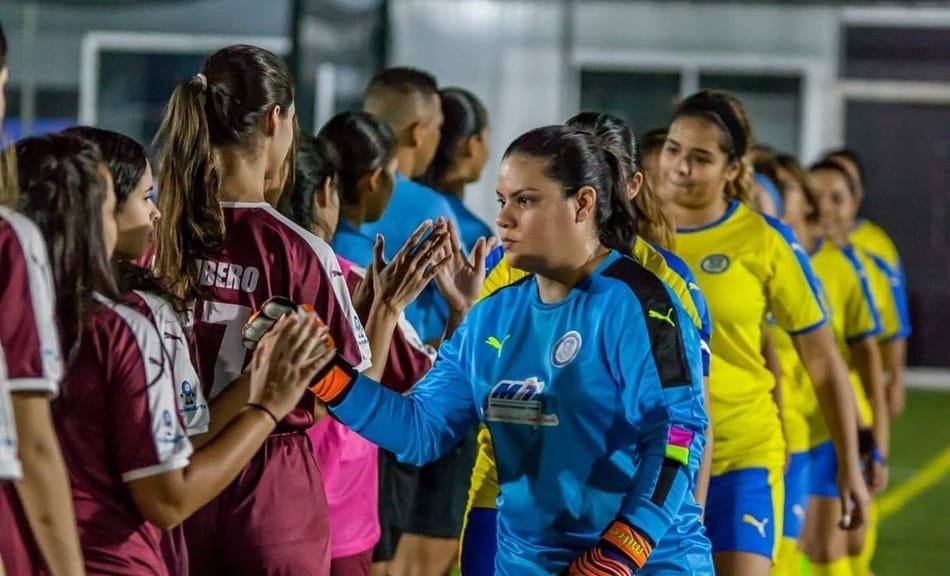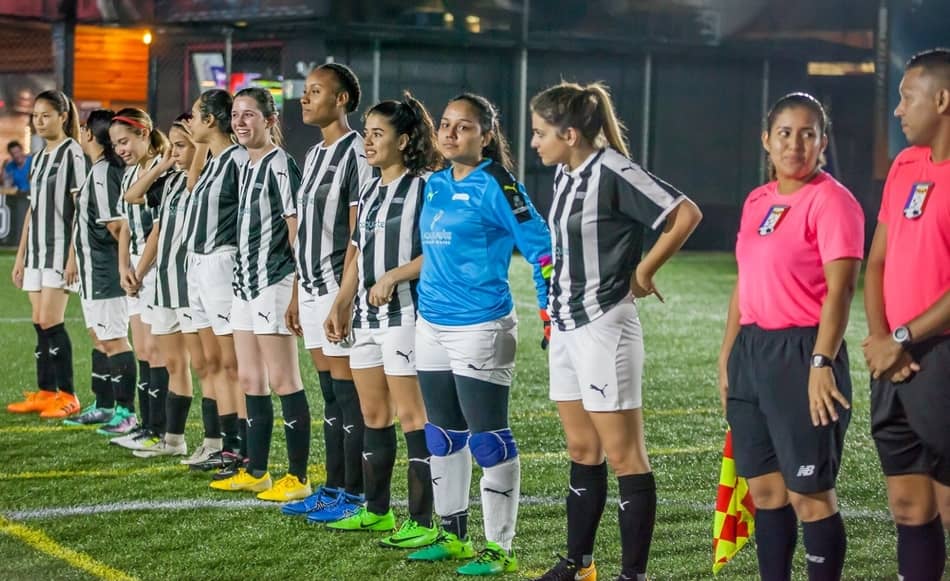
A while back whenever you logged onto the internet, your feed was bombarded with phrases such as “equal pay”, “wage gap”, “we want money”. Now that the topic cooled off a little it’s my job to do a nicely constructed analysis.
You can tell from the title that we’re going to be talking about a topic that divides opinion. However, this conversation needs to be had and that is why we are currently going into the world of football.
I will try and make this post unbiased as possible, and at the end of the post, you should be able to understand why female soccer players are paid less. If you’ve ever asked yourself why women earn less than men in soccer, I hope this gives you the answer, and I hope this article is read with the utmost comportment.
Disclaimer:
Before we start, I’ve decided to split it into five different segments to add a bit more clarity for you to read this article. However, before we dive into this article I have to give a bit of disclaimer lest people jump into conclusions and hurl absurdities at me.
I just want to state, before we go into all of the different segments of this entire argument, that if you are a brain surgeon and you’re a woman, you and a male brain surgeon deserve to get the same amount of money. If you are a female flight attendant, you and a male flight attendant deserve to make the same amount of money.
The same thing applies to female and male chefs and all professions everywhere. I hope you get a general idea. I could go on here all day about what I think men and women should get paid for certain roles.
However, when it comes to football there are some clear disparities between how money is made, what demand there is, and what is available to pay individual men and individual women.
The Difference between Male and Female Sports:

A point of view is that men love competing against each other. It’s been like this for thousands of years and it’s never going to change. Some sports have a bigger following for female athletes like gymnastics and ice skating. In reality, the average woman does like sports but not necessarily team sports because of their different lifestyles. Women like yoga, jogging, and body exercises.
They practice these more because they want to be lean and feminine and football is rough on the legs and a lot tougher in general. Not saying women won’t like soccer, there are thousands that absolutely love this game.
What I’m saying is that it’s most likely they will prefer other sports like gymnastics, tennis, or artistic swimming that get along better with the characteristics of a common female personality. Which might be one of the reasons women’s soccer audience is less than men’s.
Don’t get me wrong, I would even say that women are tougher than men when playing soccer. In fact, in my article Why Soccer Players are So Dramatic and Fake Injuries, where I talk about foul simulation, I explain how women’s soccer is less dramatic than men’s. In women’s soccer exaggerating is almost unseen, whereas in men’s it is very common.
The US Women’s National Team vs. The US Men’s National Team:
Now we’ve got the boring stuff out the way, the first one and where the fundamentals of this article begin is the US Women’s National Team versus the US Men’s National Team.
This offers a very different example to the rest of the comparison that could be made between men’s and women’s football.
There is an economic reason as to the logic behind why women should get paid the same as men. In a video posted by SportBible of Megan Rapinoe, you can hear at the start of the video that the fans in the crowd are chanting for equal pay and then she goes on to say, “I think everybody is ready for it, everybody wants it”.
It’s quite difficult as someone consuming this little video to decipher whether or not Megan is actually talking about simply the US Women’s National Team against the Men’s National Team within US soccer or whether she’s talking about just generally, in the bigger picture, whether women deserve to make the same amount as men.
Just for laughs, I quote tweeted it, and to be honest I probably shouldn’t have. Being as sarcastic as I am, tweeted, “If I saved a penalty at the Olympic Stadium in Baku surely that means I deserve at least a hundred and forty-eight thousand, two hundred and fifty pounds”.
I will just say this for the record that the majority of people understood that I was not being funny when I made this comment. I was simply just trying to make fun really and that comes from just society in general in 2019 where everybody kind of feels a bit entitled and everybody feels as though the world owes them something. I simply made the joke saying that if I saved a penalty from Louie Benevento in Baku, who’s going to provide me with a fortune?
Nobody is. It’s just a joke. There’s absolutely no rational logic involved with this argument whatsoever.
The US Women’s Football Team has been More Successful:
When it comes to looking at the facts about US Women’s Football against US Men’s Football, it’s very clear that when we’re talking about the word success the US Women’s National Team has provided a lot more success than the US men’s national team.
When we’re looking at it from a genuine economic perspective, what brings in the most money for the United States is Women’s football. Women’s football has brought in more money than the men since 2016, which therefore in my humble opinion means that the US Women’s National Team has a very fair argument within US soccer to demand the same amount of money as the men.
Let’s take a look at a Forbes article written by Ryan Lake. It’s a pretty well-written article and I quite enjoyed reading it.
The first thing we’re going to take a look at is a graph which is the revenue generation between the Men’s National Team and the US Women’s National Team from 2009 all the way through to around 2013.
The US Men’s National team is bringing in more money. The gap gets closer in 2013 yet the men still are on top. It then dips again as US Women’s Football starts making less money until 2016 where the US Women’s National Team begins to bring in more money than the men.
It looks to me as though it’s pretty much the same in 2017, slightly less in 2018, and most likely more so now 2019. In total, it looks as though the US Women’s National Team has earned more money since 2016 than the men.
International Argument:

This is where everything starts to become based off of opinion because there isn’t a law that is written in football that says that the national team for the men and the national team for the women should be paid the same amount of money. I’m talking here not just within the US but globally.
You might still be asking why the difference in payment is so big. I understand there is a difference but how can men earn so much? In my article “Why Soccer Players are Paid so Much?” you can find the answer to your question.
This is where the argument stops being about the US and starts to be a global discussion. According to supply and demand in economics, the Men’s National Team deserves to be paid more money than the women because the money generated by the men is significantly higher than the women.
Therefore how can we justify paying the women the same amount of money as the men if they’re not making it in the first place? Let’s put that question aside for now.
My opinion on this matter is that playing for your country shouldn’t be about making money at all. It should simply be an act of patriotism where you are playing for the entire nation of which you are from.
That’s my opinion. So if we take money out of the equation that is the number one importance as to why either a man or a woman would want to play for their national team. Andy Cassano made a very good point in response to my tweet initially saying, “They should be paid the same for representing the national team in my opinion. It’s not a wage, it’s a stipend to allow you to represent your country but then I doubt it even is different for men and women. Club football is very different though and equal pay isn’t realistic”.
We’ll get into that discussion in a moment. Itani responded saying, “It all comes down to do they bring as much money in as the men? If so then yes she’s right”. I’m not entirely sure how it works from country to country on what the stipend payment is for men and women who represent their national teams but as I’ve already said and stated, I feel as though the actual patriotic element within it is payment enough.
Of course, they’re professionals and they should be paid for what they do but particularly within the men’s game, I don’t feel as though in men’s football they need to get paid to pay for their country. However in women’s football, clearly wherein club football you don’t make as much money because of the economic supply and demand element.
There isn’t as much money within the game, within women’s club football, as there is in men. Therefore I feel as though within the national team, I’m not entirely sure what it’s like country by country as to what the stipend payment is for both men and women, women should be paid more.
There is a debate that could be had here to make the gap the same or at least bring it closer together if it isn’t already.
Again, you’ve got extreme differences between certain men’s football teams and certain women’s football teams where it wouldn’t be fair from an economic supply and demand standpoint to pay them the same.
I feel as though that is an argument both ways, with my personal opinion being there you shouldn’t need to get paid to play for your country in the first place and it should just be simply an honor as a starting place.
I certainly believe that because the men make more money within the club football there could be an argument here for women to make the same for playing for their national team.
We’ll leave this here and move to the one where quite frankly I don’t feel as though there is any real logical explanation for men and women to be paid the same amount.
Club Football and the Wage Differences:

Now I’m not saying that the video that I quote tweeted of Megan Rapinoe is what she’s saying. She may not be relating to women and men in football, in general making the same amount of money, not just on an international level. There’s a reason for the disparity between men’s and women’s wages in club football.
Let’s take a look at another Forbes article. This one is written by Mike Ozanian. “Revenue disparity explains pay disparity between soccer world cups men and women ”. “News today that France gained 38 million dollars from FIFA for winning soccer’s World Cup in Russia. While the Women’s Champion in France this summer will earn just four million dollars has prompted outrage.
The total prize money for the Women’s World Cup in France this July will be 30 million dollars compared to the total prize money of 440 million dollars for the men’s teams at the 2022 World Cup in Qatar. The difference between the men’s and women’s prize money is ridiculous, Tatiana Haney who oversaw women’s soccer for FIFA before stepping down in 2017 said. According to the Associated Press, it’s disappointing the gap between the men’s and women’s World Cups got bigger. It sends the wrong message.
If we bring it back to those five categories that we mentioned earlier, if we bring it back to simply wanting the football to grow as a whole when the economic supply and demand factor suggests that men’s football is still increasing at a rate that economically is far more significant to what the women’s game is generating from a business perspective, then it’s not outrageous that we’re talking about a disparity in the prize fund is there?
If there are not 440 million dollars within women’s football to be able to offer that as prize money then it’s understandable. It’s like a small business taking out a multi-billion dollar loan and they’re wondering why they can’t pay it back. That’s just supply and demand, basic economics.
However, within the men’s game, there are four hundred and forty million dollars to be won because the World Cup is worth billions to countries and the world from a global broadcasting sponsorship perspective. It’s so much bigger.
Could The Wage Difference be the Fault of Women?
Women need to support themselves. You will find that in a crowd of ten women, only one watches football. Even that percentage doesn’t support women’s football at stadiums.
However, it’s the 21st century and stadium attendance is not the only parameter that shows us who cares the most about football. There’s also social media. Who do you think watches more football videos on YouTube? Men.
Could the lack of women’s interest in their division be the cause of wage disparity at the club level?
I wrote an article with 17 Reasons Why Soccer Is The Most Popular Sport in the World. What is beautiful about this game is that anyone can play it and hopefully we’ll see more women supporting women’s soccer than men’s.
Female Players Make a Greater Percentage than Their Male Counterparts:

Mike came on to add that it is nonsense when viewed appropriately. He states, “Based on how much money they generate, women make more than men. As Dwight Jaynes pointed out four years ago after the US Women beat Japan to catch the World Cup in Vancouver, there is a big difference in the revenue available to pay the teams.
The Women’s World Cup brought in almost seventy-three million dollars of which the players got 13%”. “The 2010 Men’s World Cup in South Africa made almost four billion dollars of which nine percent went to the players.
The Men’s World Cup in Russia generated over six billion in revenue with the participating teams sharing four hundred million, less than seven percent of revenue. Meanwhile, the Women’s World Cup is expected to earn 131 million dollars for the full four-year cycle between 2019 and 2022 and dole out thirty million dollars to the participating teams”.
According to Mike, the pay disparity is justified. It comes back again down to this whole gender equality thing as to whether it’s right or wrong any sense across the world. For me, it is all based around the economics of what the actual business in question brings in. From what we’ve seen there the percentage of prize money that women receive compared to what the men receive a percentage of the revenue brought in women get paid a higher percentage.
This brings us to club football where the disparity that we’re talking about is even bigger. There is not as much money in women’s club football as there is in men’s club football.
Final Thoughts:
To summarize, I certainly understand the US Women’s National Team’s case on why they believe they should be paid the same amount as the Men’s Team in the USA.
Things can often be taken out of context when it comes to articles like this so if you have any questions about my own opinions on any of the matters be sure to leave them in the comments. Also, be sure to leave your sentiments and stance on this subject.
Please share this article if you enjoyed reading it.

